Final report for FNC15-993
Project Information
Nebraska Mushroom LLC is an 8,000 square foot, indoor, year round mushroom farm that specializes in production of gourmet and medicinal mushrooms that primarily grow on wood. We have been in operation since fall 2011.
The objectives for 2016/2017 were to address waste streams of indoor mushroom cultivation and develop a strategy for turning waste into profit and increasing sustainability by looking at use of "spent mushroom substrate" (sms) in vegetable farming operations as a fertilizer to determine if it was comparable to or better than common soil conditioners and fertilizers in performance and cost. Our solution was to add weathered sms to the beds and plant typical vegetable crops using sms only in one row, spent mushroom substrate with conventional soil amendments and techniques in the second, and with conventional amendments and techniques only in the third and track the progress and outcomes from each row and crop variety. In late March 2016 soil samples were taken to see if the soil chemistry had changed since the first application in the fall. The first seeds were planted in each row. Our hope was that the rows using spent mushroom substrate would result in a healthier soil, higher quality crops, and greater crop yield with less need for water, inputs, and labor.
2016 Red Hawk Farm- planting began May 2nd 2016 with greens, peas and radishes. May 9th beans and beets were planted. May 14th herbs, tomatoes and peppers were planted. May 21st radishes, peas, beans, beets and greens had all sprouted in each bed. Seeds planted in the sms beds seemed to sprout slightly faster than the conventional bed. Radish sprouts planted in the sms were smaller and showed discoloration (yellowing and red edges) while all other sprouts appeared to be normal. Overall bed 2 looked the best with the fewest weeds and even germination. Beans and dill planted in the bed with both sms and conventional practices seemed to do the best overall and were bigger, lush and deep green in color. The biggest noticeable difference in the beds was the amount of unwanted weeds. Beds with sms had far fewer unwanted plants growing in them compared to the conventional bed. Grasshoppers were a major factor in the beds' success last year with a majority of the plants dying to them, while the bed with only sms seemed to be less affected by them.
Although Cook, Grow, Sew's plots at Community Crops were unable to be attended to and tested properly, a cover crop mix was planted and then cut and tilled in late summer, potatoes were then planted but unfortunately ended up being flooded out. Garlic was then planted in late fall and we will see how it does come this season.
On 7-21-16 Biological samples were taken at all sites.
Another round of sms was applied to the beds at both farms so we can continue further testing this year.
SMS may be better suited to be actively composted or vermicomposted before using it in the field. If it is used in crop production after simply being weathered it should be used in the right quantity, paired with the right crops, and incorporated with other beneficial soil additives. It does add biological matter to the soil, acts as a water retainer, helps with weed management, and greatly increases the plow ability of the soil after it has been incorporated. It may also preform better with crop production the longer it is in the ground and is further broken down by the increased microbial and fungal activity before crops are planted. It may also have a use in remediation and rehabilitation of damaged lands.
2017 Composting and Vermicomposting- This year we opened a new location that focused on shiitake production. This farm was conveniently located near a vermicomposting operation and so we sent all sms from this farm to be composted and/or vermicomposted and used for crop production. With these processes you get very similar benefits as sms, just quicker and with added cost. The owner also reported a benefit to his worm beds due to the introduction of the mushroom blocks.
2017 Red Hawk Farm- This year radishes, beans and corn were the crops planted in the three beds. Bed 1 contained sms laid on top of ground and planted into. Bed 2 contained sms incorporated into the soil. Bed 3 contained no sms.
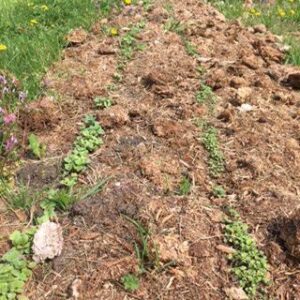 Bed1 with radish sprouts.
Bed1 with radish sprouts.
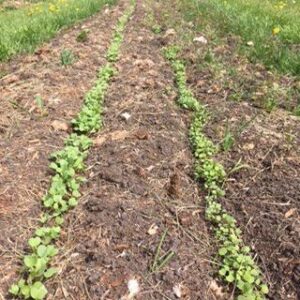 Bed 2 with radish sprouts.
Bed 2 with radish sprouts.
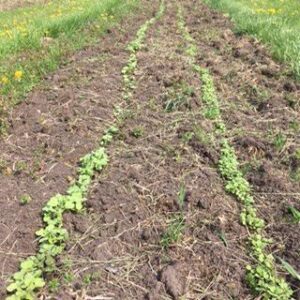 Bed 3 with radish sprouts.
Bed 3 with radish sprouts.
Radish sprouts planted in bed containing sms only laid on top of soil showed signs of yellowing and were smaller than their counterparts in the other two beds . Overall bed 2 sprouts appeared to preform the best.
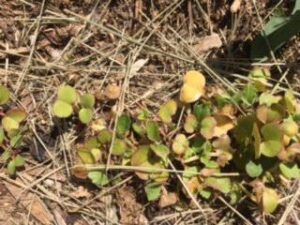
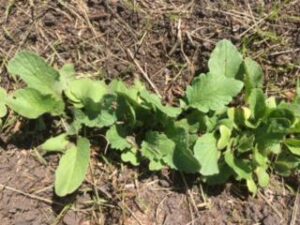
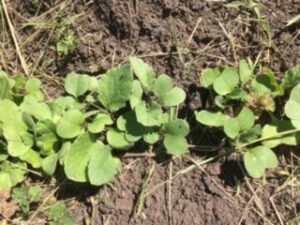
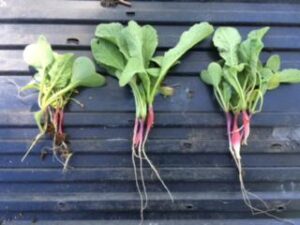
Bed 2 also produced the greater amount of harvested radishes
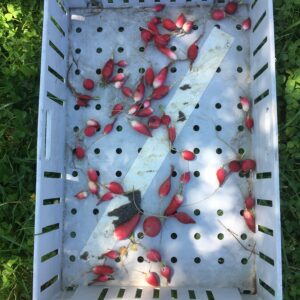
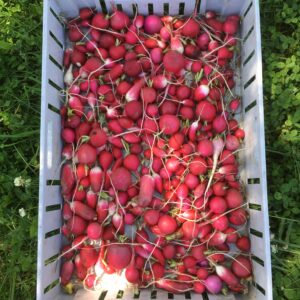
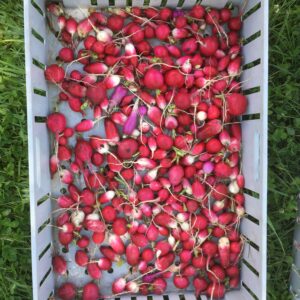
After the radishes were harvested beans and corn were planted in their place.
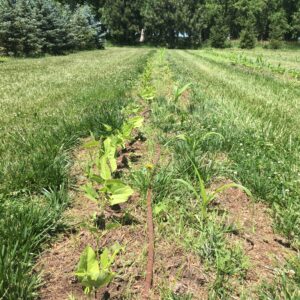
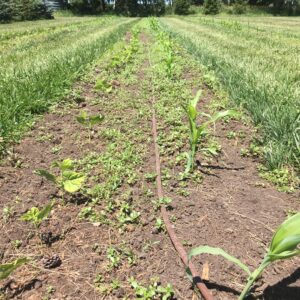
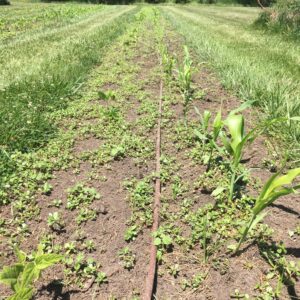
Bed 2 was clearly doing better than the other two producing much healthier looking plants that were more uniform and had much better development.
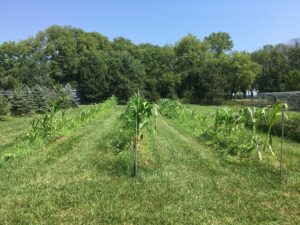
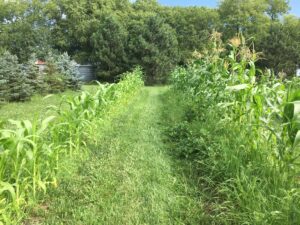
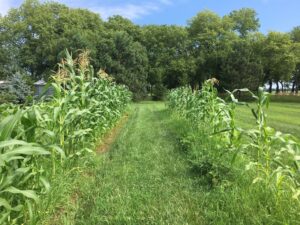
Bed 2 also produced the better ears of harvested corn.
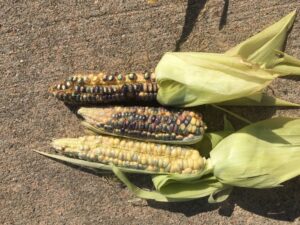
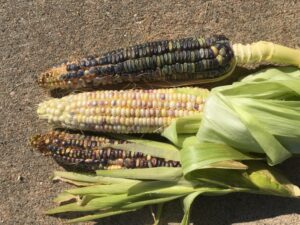
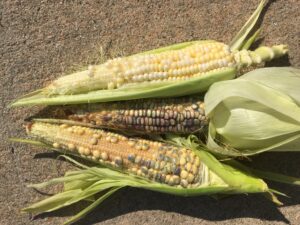
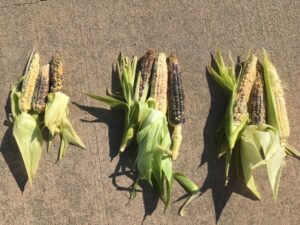
Although the beans performed poorly overall bed 1 actually produced the most and largest beans.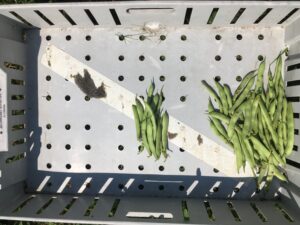
2017 Cook Grow Sew- Due to design of the beds not having physical separation between the rows and after two years of application and tilling, it was hard to determine the control from the other rows and so we decided to primarily test the water holding and drought resistant capabilities of sms. Semi-weathered sms was tilled into the soil in late fall of 2016 and immediately planted with garlic and covered in straw. No water was applied to the crop for the duration of this experiment. In late spring the plants looked extremely healthy, large, and uniform across the bed.
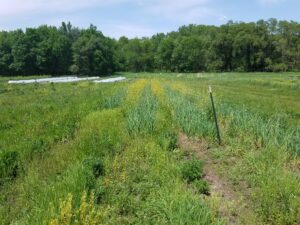
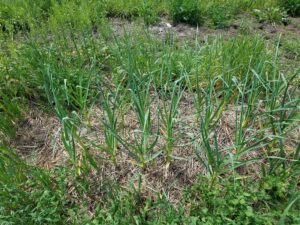
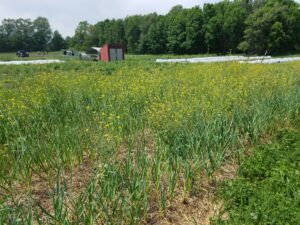
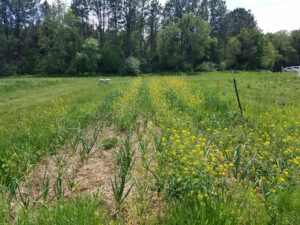
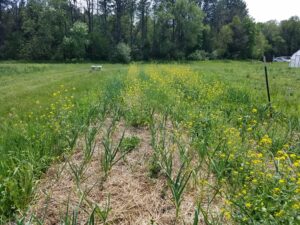
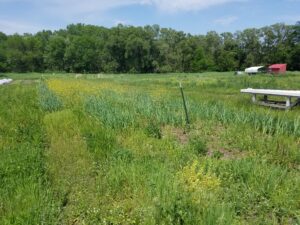
By mid June they produced beautiful and large scapes.

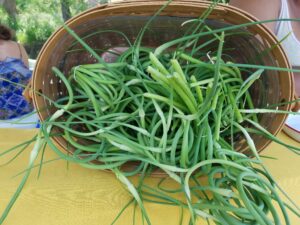
Right before the garlic was harvested the area received a lot of rain and the bed at Community Crops sits in a low spot. That combined with the sms and straw led to rot on a portion of the crop. But a majority of it was salvaged and turned out great.
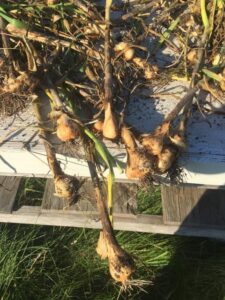
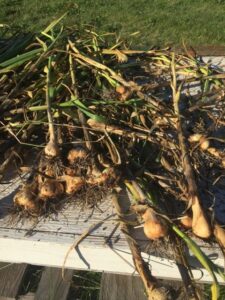
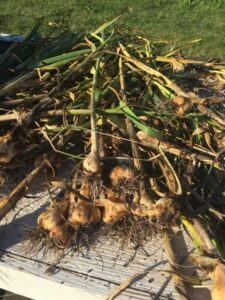
This experiment showed that care should be taken when using sms in low areas, areas that don't drain well, or areas prone to flooding. Overall sms showed it has great water retaining capabilities and could be beneficial during times of drought.
2017 Adventures in Urban Farming- AIUF is a local CSA that I am a member of and through my outreach they decided to use sms in a section of their large garden. Sms was applied in fall and then tilled and planted in the spring. AIUF had great success using sms to grow vegetables including tomatoes, basil, swiss chard, cabbage, turnips, green beans, and others for their 20 plus week long, 10 family, CSA.
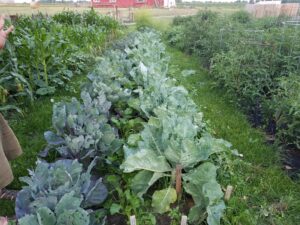
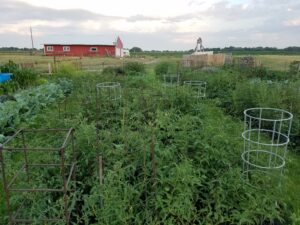
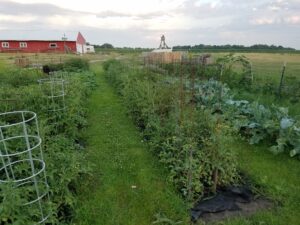
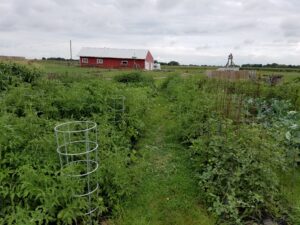
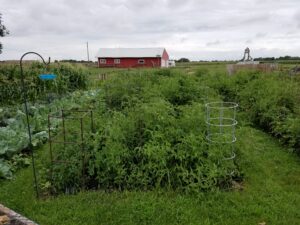
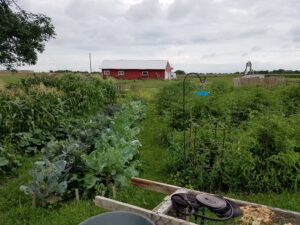
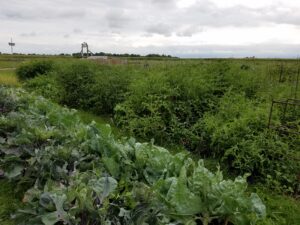
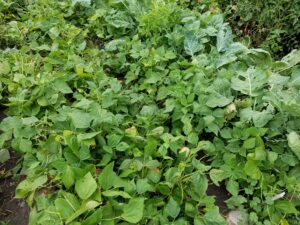
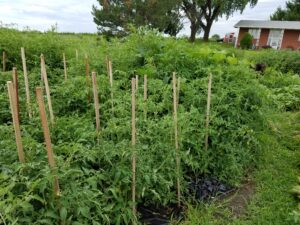
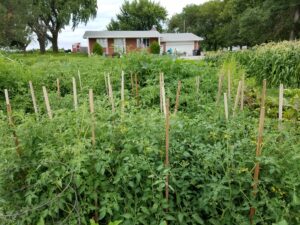
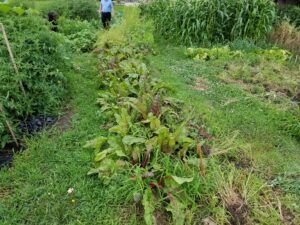
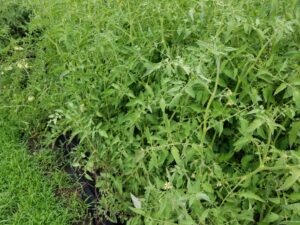
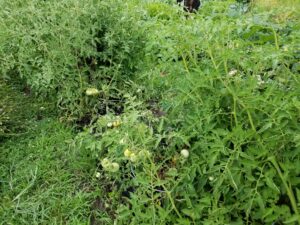
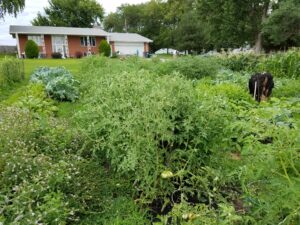
2017 Nebraska Mushroom- Through my research into soil health and soil building I became intrigued with hugelkultur due to the fact that it uses the natural breakdown of wood and debris buried within the hill to feed the crops planted on the hill. So I decided to build two hills comprised of only sms covered in a few inches of soil and plant my own personal garden to further test the power of sms in a different farming technique. The sms was not weathered but instead the mushroom blocks were used immediately after the mushroom harvest was completed.
The first hill was comprised of roughly 170 spent shiitake blocks stacked in a hill and covered with soil.
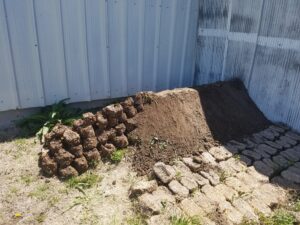
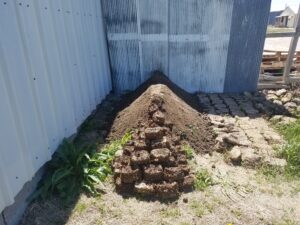
The second one was comprised of roughly 170 blocks of varying varieties of cultivated mushrooms including maitake, enoki, nameko, brown beech, and lions mane.
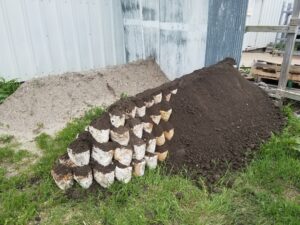
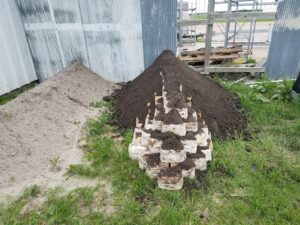
Both hills were covered in a few inches of soil and a variety of garden vegetable seeds including cucumber, corn, beans, summer squash, watermelons, winter squash, and carrots were planted on the hills. Again we wanted to test the water holding abilities of the hills so after the seeds sprouted and got to a large enough size all watering was stopped.
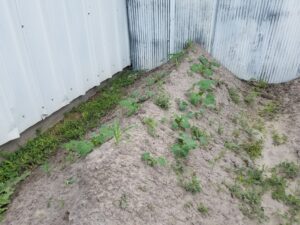
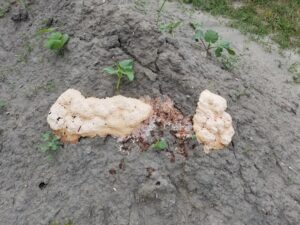
Something we saw throughout the growing cycle of the hills was a slime mold commonly referred to as scrambled egg slime mold/dog vomit slime mold. It even encompassed some of the plants but did not harm them in any way.

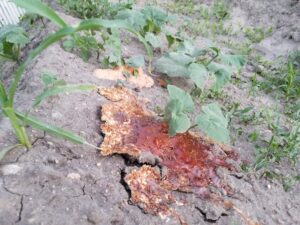
Below are just a few photos over the course our season with the mushroom hills.
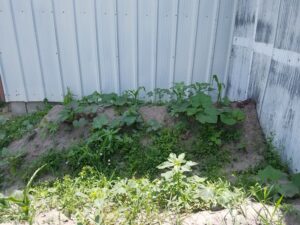
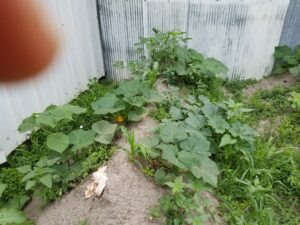
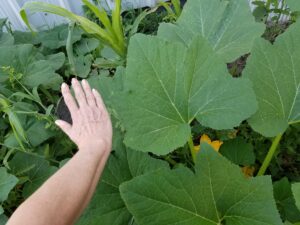

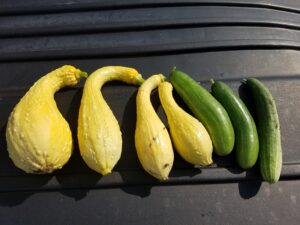

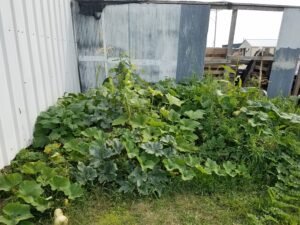
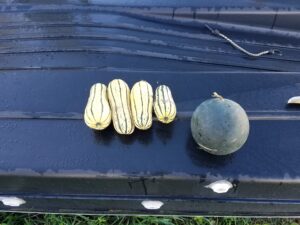
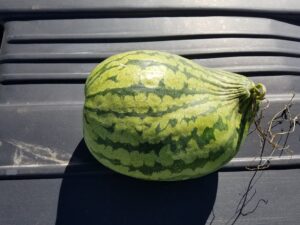
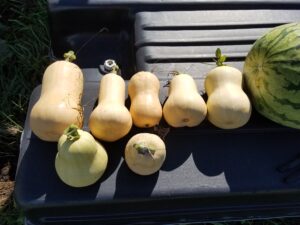
 Despite some wind damage early on all the vegetables planted on the hills were healthy and showed no signs of disease or pest damage. There were lots of insects present but it seemed as though a balance existed between predators and prey and nothing attacked the plants. No water was added other than what fell and very minimal weeding was done.
Despite some wind damage early on all the vegetables planted on the hills were healthy and showed no signs of disease or pest damage. There were lots of insects present but it seemed as though a balance existed between predators and prey and nothing attacked the plants. No water was added other than what fell and very minimal weeding was done.
Overall our experiment with the mushroom hills was a huge success and showed that sms might be more beneficial if used immediately while the edible mushroom fungus is still wet and alive and that it doesn't need to be broken up and incorporated like we did in other test. Using the sms in this manner also means no need to store it as it can be used immediately after the mushroom harvest when the block still has a lot of moisture within it. Another great benefit of this method is you might just grow some edible mushrooms alongside your veggies -- like this huge Lion's mane that grew under some watermelon and carrots.
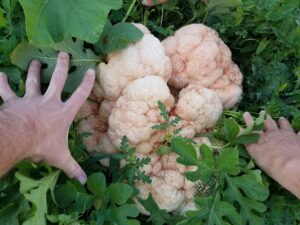
This coming year we plan on doing more wine cap cultivation outdoors, alongside vegetables, producing high quality mushrooms in the field while they enrich the soil for the vegetables.
Conclusion- Across all of our experiments our research has shown that sms is a viable alternative to other fertilizers and soil conditioners and should be looked at as valuable product and not simply a waste material. It is a cost effective way for farmers to build soil health while operating in a sustainable fashion and the benefits seem to get better with time and persist long after initial application.
The objectives for 2016/2017 were to address waste streams of indoor mushroom cultivation and develop a strategy for turning waste into profit and sustainability. We did this by looking at the feasibility of using spent mushroom substrate in vegetable farming operations as a fertilizer to determine if it was comparable to or better than common soil conditioners and fertilizers in performance and cost. Our solution was to add weathered sms to the beds and plant typical vegetable crops using sms only in one row, spent mushroom substrate with conventional soil amendments and techniques in the second, and with conventional amendments and techniques only in the third and track the progress and outcomes from each row and crop variety. In late March 2016 soil samples were taken to see if the soil chemistry had changed since the first application in the fall. The first seeds were planted in each row. Our hope was that the rows using spent mushroom substrate would result in a healthier soil, higher quality crops,and greater crop yield with less need for water, inputs, and labor.
Cooperators
Research
Impacts
Seeds planted in the sms beds seemed to sprout slightly faster than the conventional bed. Radish sprouts planted in the sms were smaller and showed discoloration (yellowing and red edges) while all other sprouts appeared to be normal. Overall bed 2 looked the best with the fewest weeds and even germination. Beans and dill planted in the bed with both sms and conventional practices seemed to do the best overall and were bigger, lush and deep green in color. The biggest noticeable difference in the beds was the amount of unwanted weeds. Beds with sms had far fewer unwanted plants growing in them compared to the conventional bed. Grasshoppers were a major factor in the beds' success last year with a majority of the plants dying to them while the bed with only sms seemed to be less affected by them.
SMS may be better suited to be actively composted or vermicomposted before using it in the field. If it used in crop production after simply being weathered it should be used in the right quantity, paired with the right crops, and incorporated with other beneficial soil additives. It does add biological matter to the soil, acts as a water retainer, helps with weed management, and greatly increases the plow ability of the soil after it has been incorporated. It may also preform better with crop production the longer it is in the ground and is further broken down by the increased microbial and fungal activity before crops are planted. It may also have a use in remediation and rehabilitation of damaged lands.
Accomplishments
At Red Hawk Farms planting began May 2nd 2016 with greens, peas and radishes. May 9th beans and beets were planted. May 14th herbs, tomatoes and peppers were planted. May 21st radishes, peas, beans, beets and greens had all sprouted in each bed.
Although Cook, Grow, Sew's plots at community crops were unable to be attended to and tested properly a cover crop mix was planted and then cut and tilled in late summer, potatoes were then planted but unfortunately ended up being flooded out. Garlic was then planted in early winter and we will see how it does come this season.
On 7-21-16 Biological samples were taken at all sites.
Another round of sms was applied to all beds at both farms so we can continue further testing this year.
Educational & Outreach Activities
Participation Summary:
2-22 through 2-24 2016 Nebraska State tourism conference where eco agri tourism professionals from across the state toured my farm and I spoke about sms as fertilizer.
3-1-16 Spoke to a local gardening club about mushroom cultivation and sms as fertilizer.
3-23-16 KZUM radio show "How's it growing"- where I spoke with Bob and Bertine about mushroom cultivation and sms as fertilizer
4-5-16 Community Crops workshop- where I demonstrated growing mushrooms at home and spoke about sms as fertilizer
4-19-16 Urban farm workshop- where I demonstrated growing mushrooms and spoke about sms as fertilizer
5-20-16 Spoke to a local PEO group about mushroom cultivation and sms as fertilizer
8-9 through 8-11-16 Nebraska State Fair- Spoke under the sustainability pavilion about mushroom cultivation and sms as fertilizer and distributed a facts handout about incorporating mushroom cultivation into existing farming systems and utilizing sms as fertilizer.
4-22-17 Green Fling event at CCC Hastings where I spoke on the campus radio and to a crowd at the event about mushroom cultivation and sms as fertilizer
I also had out fact sheets and speak to customers and local farmers every week at the farmers market I attend. We also plan to share our findings and promote sms as fertilizer on our website in the future
Learning Outcomes
We learned that SMS is a sustainable alternative to many other fertilizer/soil enhancing products and that incorporating it into vegetable production is a sustainable and potentially profitable way to manage the waste materials of an indoor mushroom farm utilizing raw wood as their substrate. We no longer view the sms as a waste, but a product to go with our fresh mushrooms and are envisioning more ways to harness the power of sms.